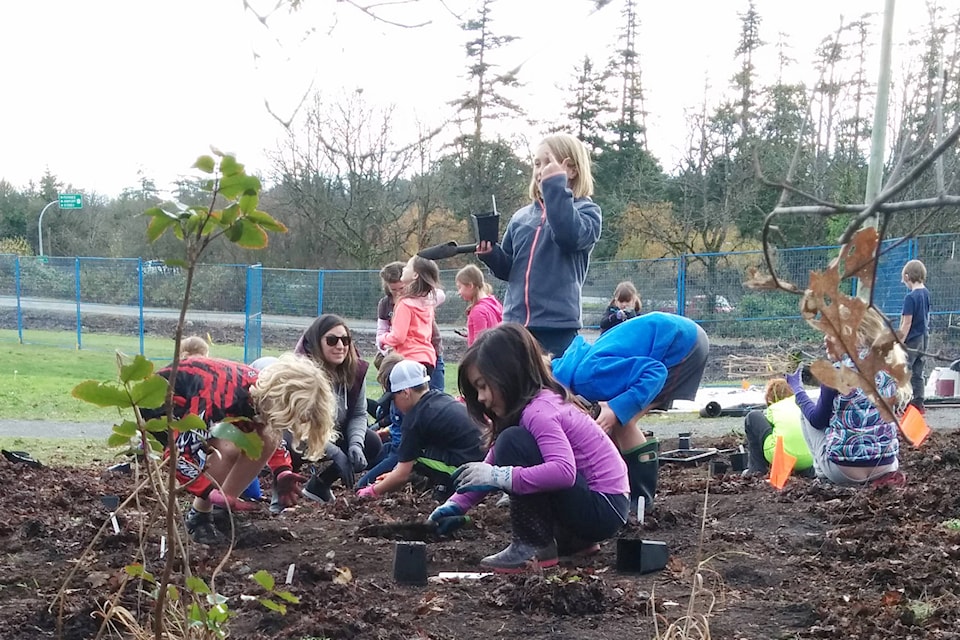Students from École Marigold elementary celebrated Earth Day (April 22) a day early on Friday by celebrating a brand new garden of their own.
Marigold’s new pollinator habitat garden and outdoor learning space in the schoolyard was created through the Green Spots school program by Habitat Acquisition Trust. It comes at a crucial time as the McKenzie interchange construction leveled most of the local trees, flora and ecosystem.
“By creating something positive for the students to focus on in the midst of this large McKenzie interchange construction project, we are bringing their attention to what they can do to support the remaining Garry oak habitats we have left,” said Paige Erickson-McGee, stewardship coordinator of HAT. “The students are very passionate about nature on their school grounds and want to ensure it stays protected for their own enjoyment and learning.”
Prior to the construction’s devastation of the local Garry oaks ecosystem, the Ministry of Transportation and Infrastructure permitted a salvage of native plants within the interchange construction area by HAT staff.
The bulbs were planted into the garden.
On Friday, the students hosted a school-wide assembly to learn about the native species in their garden with bees and butterflies in mind. It started in the fall when students planted over 250 native plants to create this pollinator garden.
Wildflowers including camas, fawn lilies and native grasses that once flourished under the Garry oaks of Marigold’s fields are now being brought back by the students.
HAT, the District of Saanich and School District 61 all contributed to the Marigold project.
The goal of Green Spots is to give students the opportunity to restore and enhance habitat in their own schoolyard by pulling invasive weeds, digging in the dirt and placing native plants in the ground, said Jill Robinson, executive director of HAT.
“These schoolyard nature-scaping projects restore natural areas for future generations of outdoor explorers to enjoy,” Robinson said.
The meadow will provide a place for teachers to bring their students to sit and observe nature, paint or draw a spring wildflower, or to ponder why the flowers go dormant over winter.
